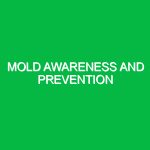Environmental spills and impact reduction are pivotal concepts within the Health, Safety, and Environment (HSE) domain. As industrial activities and transportation networks expand, the potential for spills—whether they involve oil, chemicals, or hazardous materials—grows proportionally. These incidents can lead to catastrophic consequences for ecosystems, human health, and the economic stability of communities. Understanding the dynamics of environmental spills and implementing effective impact reduction strategies is essential for businesses, regulators, and individuals alike. This article delves into the complexities of this issue, exploring risks, safety precautions, regulations, and best practices for minimizing the severity and frequency of spills.
Understanding Environmental Spills
Environmental spills refer to the unintentional release of substances into the environment, usually in significant quantities. These substances may include oil, chemicals, and other hazardous materials that pose risks to human health and ecosystems. The nature of the spill, the environment it occurs in, and the substances involved can drastically influence the extent of the damage caused.
For instance, consider the infamous Deepwater Horizon oil spill in 2010. This catastrophic event released approximately 4.9 million barrels of crude oil into the Gulf of Mexico, causing severe environmental degradation, economic loss for local fishing industries, and a long-lasting impact on marine life. Such incidents underscore the critical need for effective spill prevention and response measures.
Potential Hazards and Risks
Identifying hazards associated with environmental spills is the first step toward effective risk management. There are several key hazards to consider:
Chemical Exposure
Spills often involve hazardous chemicals that can pose immediate health risks to workers and nearby communities. Exposure can occur through inhalation, skin contact, or ingestion. For example, an agricultural chemical spill may lead to acute poisoning, respiratory issues, or long-term health problems for those exposed.
Environmental Degradation
Spills can devastate local ecosystems. Oil spills can smother marine life, while chemical spills can contaminate soil and groundwater. The long-term ecological impacts may include loss of biodiversity, disruption of food chains, and degradation of natural habitats.
Economic Impact
The economic repercussions of spills can be severe. Industries dependent on clean water and natural resources, such as fishing and tourism, may suffer immensely. Cleanup costs can also be astronomical, often running into millions or even billions of dollars, as seen in the aftermath of major spills.
Legal and Regulatory Risks
Organizations face significant legal risks following spills. Environmental regulations hold companies accountable for spills, leading to lawsuits, fines, and damage to reputation. Non-compliance can result in stringent penalties and increased scrutiny from regulatory bodies.
Safety Precautions and Best Practices
To mitigate the risks associated with environmental spills, organizations must adopt rigorous safety precautions and best practices. Here are some actionable strategies:
Regular Training and Drills
Conducting regular training sessions for employees is crucial. Workers should be well-versed in spill response protocols, including the use of personal protective equipment (PPE) and emergency communication procedures. For example, a manufacturing plant might conduct monthly spill response drills to ensure all employees are prepared for an incident.
Implementing Spill Containment Systems
Investing in spill containment systems can significantly reduce the impact of spills. Secondary containment measures, such as bunded areas or spill trays, can prevent hazardous substances from entering the environment. For instance, an oil storage facility might utilize double-walled tanks to contain leaks effectively.
Regular Equipment Maintenance
Proper maintenance of equipment plays a critical role in preventing spills. Routine inspections and timely repairs can help identify potential leak sources before they lead to environmental incidents. A case in point is the regular maintenance schedules implemented in many chemical processing plants to ensure that all storage tanks and piping are in optimal condition.
Effective Waste Management
Implementing comprehensive waste management practices can also help reduce the risk of spills. Proper disposal and recycling of hazardous materials minimize the amount of waste that could potentially spill. For example, a construction site may adopt a strict protocol for the disposal of paint and solvents, ensuring they are securely stored until they can be disposed of correctly.
Regulations and Standards Governing Environmental Spills
Numerous regulations govern the management of environmental spills, aiming to protect public health and the environment. Understanding these regulations is vital for compliance and effective spill response. Here are some key regulations:
The Clean Water Act (CWA)
The CWA regulates discharges of pollutants into U.S. waters and sets quality standards for surface waters. It mandates that any entity responsible for a spill must report it to the appropriate authorities and take necessary cleanup actions.
The Resource Conservation and Recovery Act (RCRA)
The RCRA governs the disposal of hazardous waste, ensuring that companies manage waste properly to prevent spills. It requires that waste generators track their hazardous materials from the point of generation to disposal.
Emergency Planning and Community Right-to-Know Act (EPCRA)
EPCRA requires facilities to report on the storage, use, and release of hazardous substances. This law aims to inform communities about chemical hazards and establish emergency planning procedures to respond effectively to spills.
Real-Life Example: Lessons from the Exxon Valdez Disaster
The Exxon Valdez oil spill in 1989 is a stark reminder of the far-reaching consequences of environmental spills. Approximately 11 million gallons of crude oil were released into Prince William Sound, leading to devastating effects on marine wildlife and local economies. The cleanup efforts were extensive, lasting for years and costing billions of dollars. This incident prompted the development of stricter regulations and enhanced response strategies in the oil industry.
From this disaster, several lessons emerged, including the importance of having robust spill response plans, regular training, and the need for continuous improvement in safety standards. Companies learned that prevention is far more effective and less costly than remediation.
Conclusion: The Path Forward
As industries continue to evolve, the potential for environmental spills remains a pressing concern. Understanding the risks and implementing effective impact reduction strategies is paramount. By prioritizing safety, adhering to regulations, and investing in training and technology, organizations can minimize their environmental footprint and protect both human health and ecosystems. The ongoing commitment to reducing the risks associated with environmental spills is not only a regulatory obligation but also a moral imperative. Together, we can forge a path toward a safer, more sustainable future.


